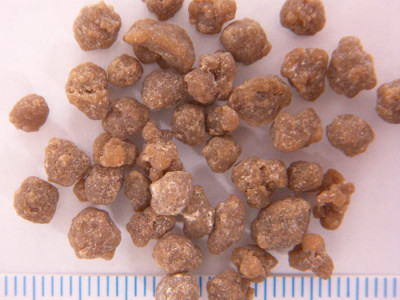Chemicals
The characterization and identification of chemicals and their impurities encompasses a remarkably broad range of topics, concepts, and expertise. In the context of our laboratory, our focus is specifically on the non-routine characterization of materials. In some cases, this may be the identification of a white powder; in other cases, it may be the identification of a visible, solid impurity in a raw material; while in other cases, it may be the identification of a scent, off flavor or volatile component that may be part of a product or a contaminant. Our services are used by manufacturers, formulators, in the course of product failure investigations, and litigation. While many laboratories conduct routine, standardized analyses designed to be repeated over and over, our approach typically focuses on analyses that must be tailored to a specific question or material (generally when no standardized approach is available or applicable).
Qualitative Identification
In most cases, we find that qualitative results are sufficient to address our clients’ questions. Our approach may be applied to bulk or trace components; solids, liquids or gases; and raw materials or finished products. For this reason we maintain a wide variety of reference collections and spectral databases as well a significant physical library. It is quite common for us to encounter new materials, however, and our wide range of expertise in experimental design, analysis, and interpretation permit us to scientifically answer questions that are outside the scope or expertise of many other laboratories. Our sample-driven approach draws from our entire span of laboratory methods, which range from microscopical to spectroscopic to elemental to chromatographic to chemical.
Quantitative Analysis
In some instances, particularly those involving litigation, there is a need to quantitate a certain chemical or component. When standardized methods exist, they may be used, though in most instances we develop scientific methods specific to a given question. Such analyses have been applied to a wide range of problems ranging from ink formulations as they relate to failure, to plastic additive compositions, to counterfeit drugs and perfumes (to name but a few).
How May We Help You?
Contact usto discuss your project in more detail.








